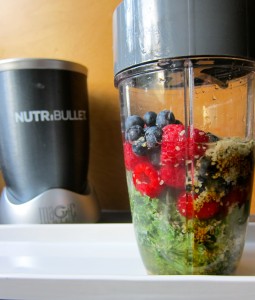
DO YOU BELIEVE IN GREEN DRINKS?
THE SUPER SIT-DOWN WITH SUPERFOOD SPECIALIST DAVID WOLFE (Aka the ‘NutriBullet guy’)
SW: Do you know about Paul Offit? He recently wrote a book called ‘Do you Believe in Magic? The Sense and Nonsense of Alternative Medicine’, plus a New York Times Op-Ed challenging the overuse of megavitamins and antioxidants.
DAW: Yeah. I know who you’re talking about.
SW: I thought you might. So he was saying that overuse of antioxidants might be potentially damaging, and that too much vitamin A and E might cause cancer. He alleges that the natural food industry lacks scientific research and regulation. How do respond to that?
DAW: Here’s the thing. We live in a world where alternative medicine has been vilified by mainstream western medicine. The analytical research that we’d love to do in alternative medicine has been blocked quite strongly by western prejudices for some time. Now this is breaking down in recent years. We’re starting to see a little bit more of the type of research that we’d want to have happen.
SW: So do think there are merits, say, to being on a 10 percent superfood diet, and a 30 percent raw food diet, or do you think people need to go to extremes to see benefits?
DAW: Well I think everybody has to do the piece that makes sense to them. If I make a crazy superfood, super herb drink, I think people feel benefits from that immediately. I’ve seen that. So I’m not one of these people that says it has to be all [or nothing] to get any benefit[…]. But what I like to do is to continue to expand the choices of superfoods and organic herbs and organic foods in general. I also [advocate] eating more fresh, raw food.
SW: Speaking of superfoods, what’s your relationship to the NutriBullet company?
DAW: Well, it’s not my company, but I’m a spokesperson and consultant for the company. And I’ve been deeply involved in the development of the recipes and of the product itself. It’s been a runaway success for all of us. I’ve always wanted to be on TV selling blender foods ever since I can remember, since I was 10 years old actually. To me, the NutriBullet is like a dream come true.
SW: You really dreamed of selling blenders?
DAW: Yeah, I had the dream of selling the blender on TV, and the dream of being the guy who gets people healthy with natural food. All of that came true.
SW: So you definitely back-up the product?
DAW: Absolutely. It’s the best. You can’t get anything like it for under $100 in the world.
*Photo from Jittery Cook
David Wolfe‘s Berry Kale Nutriblast Smoothie
- 1/3 c each blueberries, raspberries
- 1 c coconut water or enough to cover the other ingredients
- 2 leaves kale, stem removed, roughly chopped
- 1 t honey or coconut nectar
- 2 T hemp seed (or 1 T hemp seed oil, or 1 T olive oil
Combine all ingredients in this order: kale, berries, seeds, sweetener, coconut water. Make sure you stay below the maximum line. Blend in the Nutribullet for 45 seconds. Sprinkle on a little cinnamon. Start sipping right away or carry your smoothie with you in the travel cup provided. Makes a single serving.

